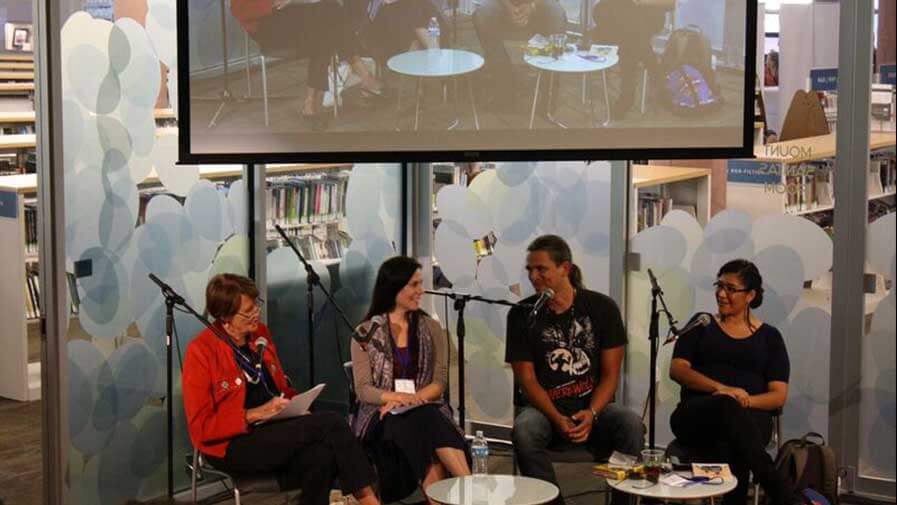


Native American Writers or Writers Who Happen to be Native American?
By Annika Paradise, Official JLF@Boulder Blogger
“Claiming ‘Creek’ identity is something that comes from the outside. I am just a writer,†explained poet Jennifer Forester. Two poets and a novelist shared their experiences, their writing processes, dispelled myths, and finally read their work to a packed room at the Steps of the Jaipur Literature Festival at Boulder. Although being labeled a “Native American writer†moves your book from the poetry shelf at Barnes and Noble to the Southwest Studies section, the writers on the panel didn’t strongly feel that their Native American identity was the most central theme to their writing. The gifts of their heritage are many and so are the stereotyped expectations.
The robust influence of fabulous oral storytelling
This shows up in the panel’s writing through uncles telling lies, grandparents as living history, the stylistic choices of presentation and stories of transformation. Many people believe that Native American literature as a genre began in the 1960s but has a tradition that goes back hundreds of years. As a writer, there is the motivation to uncover the tradition and help the unknown become known.
Myths
The world expects a Native American writer to include “the great white buffalo†in every book, to be a political warrior and assumes that theirs is an oral and not a written tradition. (The Creeks have a written language dating back to the late 1700s). “Native people†are not a singular body. There are so many unique variations between tribes and between people, a variation in subject matter and ways of storytelling.
Tanaya Wilder describes herself as privileged in many ways. As a girl growing up on the reservation, poetry was everywhere, even in the way that her grandmother mixed ingredients to create a meal. As a student at Stanford University, she was taught tools like, “show, don’t tell.†“Education in this country is limiting, but anything is possible in writing.†Her poetry felt boxed in until she was reminded that “poetry is as big as the sky.†She is now a binge poet, activist and educator.
The novelist, Stephen Graham Jones, writes his novels the way that he reads a page-turner: voraciously. He has written somewhere around twenty-five books, but he’s not sure of the actual number. As a member of the Blackfeet Tribe, who grew up in West Texas, “All [his] characters are Black Feet, whether it’s stated that way or not.†As a kid he loved werewolves and unsuccessfully tried to become one himself because the sun was too bright in Texas to be a vampire.
Jennifer Foerster describes poetry as the ability to collapse time and merge past and present. Healing involves the mixture of past, present and future. The human timeline is imaginary because it is actually layered. Poetry is a way to rebirth. Her current project is to keep a journal so that she can question what is worthy of being in a poem and what is not. She can work and rework poems for eight years and is yearning to find the place that is “less precious.†She reminded us that most of us are edge people and we straddle all worlds.



Leave a comment